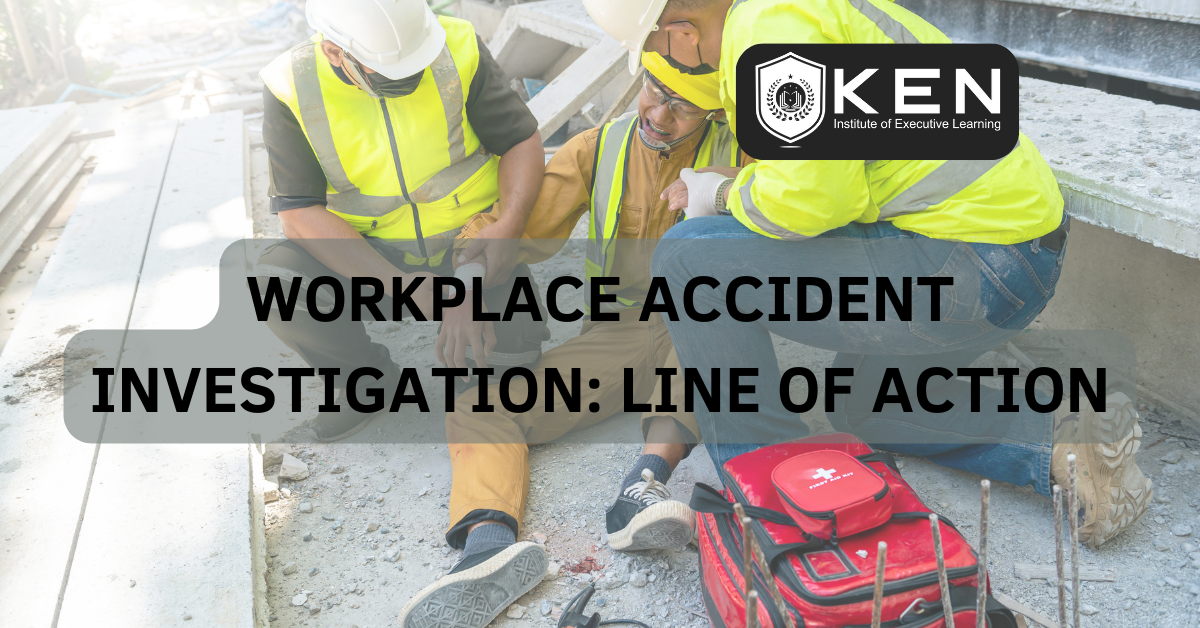The Accident Investigation procedure provides an approach to determine: Initiating Events, Contributing Events, Root Cause, and Contributing Causes. The investigation must identify appropriate recommendations that address the problems and identify root causes.
These recommendations may include, but are not limited to: Engineering Controls, Personal Protective Equipment, and Training for Affected Employees. This procedure intends to help prevent and/or mitigate similar incidents and accidents in the future.
The Accident Investigation should explore the situation for possible underlying factors and the immediately obvious causes of the accident. It is necessary to look into the possible underlying system failure that may have happened.
Policy of Accident Investigation
All safety incidents, including work-related injuries, accidents, regulatory violations, and near misses, will be investigated to determine the root causes. Recommendations will be developed and implemented to prevent the recurrence of the accident/incident.
Accident Investigation Team
Investigations should be led by supervisors, line managers, or other people with sufficient status and knowledge to make recommendations that the organization will respect. The members of the team should:
- know about the situation;
- know most about the employees;
- have a personal interest in preventing further incidents/accidents affecting ‘ their’ people, equipment, area, and materials;
- can take immediate action to avoid a similar incident;
- can communicate most effectively with the other employees concerned;
- Can demonstrate practical concern for employees and control over the immediate work situation.

Training for Investigation Team
Several people will potentially be involved in an accident or incident investigation. Training guidance and help will therefore be required. Training can be provided in accident/incident investigation courses run on-site and in numerous off-site venues. Computer-based training courses are also available. These are intended to provide refresher training individually or complete training at office sites, where it may not be feasible to provide practical training.
The Best Time to Conduct the Investigation
The investigation should be carried out as soon as possible after the incident to obtain the maximum information. An immediate investigation is advantageous because:
- facts are fresh in the minds of witnesses;
- witnesses have had less time to talk and to adjust their story to bring it into line with a consensus view;
- physical conditions have had less time to change;
- more people present at the time of the accident are likely to be available, who might be quickly dispersed following an incident, making contact very difficult;
- there will probably be the opportunity to take immediate action to prevent a recurrence and to demonstrate management commitment to recuperation;
- Immediate information from the accident victim often proves to be most useful.
Accident Investigation Procedure
The basic steps to an efficient investigation:
- Collect facts about happenings.
- Assemble the information from all available sources.
- Analyze the information gathered.
- Compare the information with acceptable industry and company standards and legal requirements to conclude.
- Implement the findings and monitor progress

Possible Available Sources for Gathering the Facts
- The accident victims and witnesses
- Supervisors and coworkers
- physical conditions
- hazard data sheets
- written systems of work
- training records.
Accident Investigations have three aspects that can be used to check against each other:
- direct observation of the scene, premises, workplace, the relationship of components, materials, and substances being used, possible reconstruction of events and injuries or condition of the person concerned;
- documents including written instructions, training records, procedures, safe operating systems, risk assessments, policies, records of inspections or tests and examinations carried out;
- Interviews (including written statements) with persons injured, witnesses, people who have carried out similar functions or examinations and tests on the equipment involved, and people with specialist knowledge.
Immediate Causes for The Accident
the following factors can provide useful information about immediate causes that have been manifested in the incident/accident.
Personal Factors:
- the behavior of the people involved
- suitability of people doing the work
- Training and competence.
Task Factors:
- workplace conditions and precautions or controls
- the actual method of work adopted at the time
- ergonomic factors
- normal working practice, either written or customary.
Underlying Causes
Underlying causes are the less obvious system or organizational reasons for an accident or incident, such as:
- supervisors did not make pre-start-up machinery checks
- the hazard had not been considered in the risk assessment
- there was no suitable method statement
- pressures of production had been more important
- the employee was under a lot of personal pressure at the time
- have there been previous similar incidents?
- Was there adequate supervision, control, and coordination of the work involved?
Root Causes
Root causes involve an initiating event or failing from which all other causes or failings arise. Root causes include:
- quality of the health and safety policy and procedures;
- quality of consultation and cooperation of employees;
- the adequacy and quality of communications and information;
- deficiencies in risk assessments, plans, and control systems;
- deficiencies in monitoring and measurement of work activities;
- quality and frequency of reviews and audits.

Accident Investigation Interview
The objective of an accident investigation interview is to discover the facts and use them to prevent similar accidents or incidents.
A witness should be allowed to explain what happened in their way without too much interruption and suggestion. Questions should then be asked to elicit more information.
Questions starting with the words: What, When, Where, Who and How.

‘Why’ should not be used at this stage!
The facts should be gathered first, with notes being taken at the end of the explanation. The investigator should then give a summary back to the witness, indicating clearly that they are prepared to alter the notes if the witness is not content with them.
If possible, an indication should be given to the witness about immediate actions. There could be further improvements depending on the outcome of the investigation.
The investigation should have highlighted both immediate causes and underlying causes. Recommendations for immediate action and longer-term improvements should come out of this.
Follow-Up
A follow-up must be made to check on the implementation of the recommendations. It is also necessary to review the effect of the recommendations to check whether they have achieved the desired result.
Accident Investigation Form
Headings that could be used to compile an incident / accident investigation form are:
- date and location of accident/incident;
- circumstances of accident/incident;
- the immediate cause of the accident/incident;
- the underlying cause of the accident/incident;
- immediate action is taken;
- recommendation for further improvement;
- report circulation list;
- date of investigation;
- signature of the investigating team leader;
- names of the investigating team.

Legal Recording and Reporting of Accidents
Accident Book
Under the Social Security (Claims and Payments) Regulations,
- Employers must record accidents at premises where more than 10 people are employed.
- Anyone injured at work must inform the employer and record information on the accident in an accident book.
- The employer must investigate the cause and enter this in the accident book if they discover anything that differs from the entry made by the employee.
- This record ensures that information is available if a claim is made for compensation.
Whom To Report To
A centralized national system is called the Incident Contact Centre (ICC), a joint venture between the HSE and local authorities. All reports sent locally are passed on to the ICC. Reports can be sent by telephone, fax, Internet, or post. If reporting by the Internet or telephone, a copy of the report is sent to the responsible person for correction, if necessary, and for their records.
Proficiently accomplished Accident Investigating for a worksite incident- a fatality, injury, illness, or close call- provides employers and workers the opportunity to identify hazards in their operations and shortcomings in their safety and health programs.
Most importantly, it enables employers and workers to identify and implement the corrective actions necessary to prevent future incidents.
“Join Ken Institute for a comprehensive Accident Investigation Certificate led by expert faculty, ensuring your readiness to tackle workplace fire emergencies effectively.”
Visit our website: www.keneducation.in
Get in touch with us at: info@keninstitute.com
Call us on +917569034271
Let’s connect on Facebook, YouTube, LinkedIn, and Instagram.


